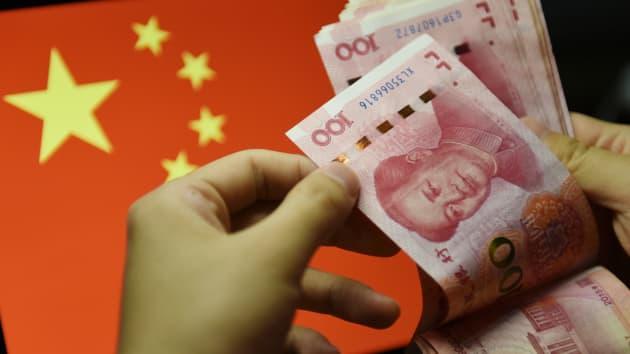The China-Iran Pact is a Game Changer

Part III: There is no timetable for an official launch
The China-Iran joint statement of last Saturday has made waves in the international media and among regional analysts from Israel to India. Israel is anxious that there is going to be security cooperation between China and Iran. Indians are brooding over the fate of their Chabahar port project in eastern Iran, integral to its “regional connectivity”.
The devil lies in the details. And the point is, the final document negotiated by Beijing and Tehran still remains under wraps. Both sides are noticeably coy. Surely, all attention in Tehran is still on reading President Joe Biden’s lips — how he frames the JCPOA in the few remaining crucial weeks remaining before the IAEA inspectors are booted out of Iran next month.
The media statement by Wang Yi, State Councilor and Foreign Minister, on Tuesday surveying the outcome of his regional tour does not even mention the pact with Iran. Wang said “the expected goals have been achieved” and underscored that the most important gain, from Beijing’s perspective, is the projection of China’s five-point initiative on achieving peace and security in West Asia by building up the capacity by the regional states “to stay impervious to external pressure and interference, to independently develop paths suited to regional realities” and most important, “break free from the shadows of big-power rivalry and resolve regional conflicts and differences as masters of the region.”
Wang urged the countries he visited — Saudi Arabia, Turkey, Iran, UAE and Bahrain (plus a “working visit to Oman) — to accommodate each other’s core interests. Looking ahead, Wang listed out the following areas of “practical cooperation”:
- alignment of the Belt and Road Initiative with the national development plans of the regional states;
- export and distribution of China’s Covid-19 vaccines regionally and creation of an international mechanism for “mutual health code recognition”;
- achieving a two-state solution to the Palestine question;
- political settlement of regional disputes;
- creating “a road map and timetable” for resuming the JCPOA and resolution of the Iranian nuclear issue;
- promotion of the China-Arab Reform and Development Forum as well as the Middle East Security Forum;
- high- and new-technology cooperation, such as 5G, big data and artificial intelligence; and,
- development of a China-Arab states “community with shared future in the new era” opposing the politicisation of human rights issues.
To be sure, Beijing is positioning itself as a troubleshooter to break the stalemate over JCPOA. On the eve of Wang’s arrival in Tehran, the US special envoy Robert Malley had a call with the Chinese Deputy Foreign Minister Ma Zhaoxu during which the latter affirmed that Beijing “will continue to play a constructive role” in bringing the JCPOA back on track.
Suffice to say, the China-Iran pact deeply is embedded within a new matrix Beijing hopes to create with the Arab states of the Persian Gulf and Iran. The pact forms part of a new narrative on regional security and stability.
Nothing is known about the nature of the payment mechanism for such massive economic transactions running into hundreds of billions of dollars that the China-Iran pact envisages. China cannot be comfortable with the risk in the use of American dollar as the currency for such transactions.
Indeed, Chinese experts have noted in recent times that Beijing realises the huge risk of over-reliance on the US dollar and Western-controlled payment system since the financial crisis in 2008, and that the latest massive quantitative easing done by the US for boosting its own economy also increases such concern.
Besides, a top Chinese expert, Dong Dengxin, director of the Finance and Securities Institute at the Wuhan University of Science and Technology, told the Global Times newspaper recently, “Washington has been abusing SWIFT to arbitrarily sanction any country at will, which has sparked global dissatisfaction. If China and Russia could work together to challenge the dollar hegemony, a laundry list of countries would echo the call and join the new system.”
As the payment system is linked to the trading system, Dong suggested that the new payment system use the yuan as the clearing currency. “At first, the system could push forward a trial run in Central Asian countries and countries and regions along the routes of the Belt and Road Initiative. As its influence grows, the system is poised to draw in other countries in Europe and the ASEAN,” Dong said.
Other reports in the recent months have also spoken of a non-dollar payment mechanism between China and Iran under discussion. It remains to be seen how far the US can stomach such an affront. China does not seek confrontation with the US — at least, not yet. For Iran too, export of oil and gas, a strategic asset, with payment in local currencies requires a leap of faith. In the most recent years, China has been urging Saudi Arabia too to move out of the dollar’s orbit for the oil trade.
Having said that, China is testing the waters in West Asia. Last January, according to reports, the Digital Currency Institute of the People’s Bank of China and the Central Bank of the United Arab Emirates joined the so-called Multiple CBDC (m-CBDC) Bridge, a cross-border payments project to facilitate fund transfers, international trade settlement and capital market transactions in their own jurisdictions.
No doubt, the digital yuan, domestically branded in China as the Digital Currency/Electronic Payment (DCEP) project could also challenge the supremacy of the US dollar. As of now, China’s cross-border payment system CIPS both partners and competes with SWIFT amid growing Sino-U.S. tensions. Greater use of the CIPS instead of the Belgium-based SWIFT system would reduce exposure of China’s global payments data to the United States. Some US analysts have criticised this as a step “advancing China’s digital authoritarianism domestically and globally.”
With China’s meteoric rise on the global stage, Beijing has long been hoping that its physical currency, the renminbi (yuan), would ride on the back of its economic success and force a shift away from the dollar-dominated financial system. China is steadily moving into a challenging yet opportunistic position.
China’s Belt and Road initiative becomes a ripe entry point for the digital yuan’s internationalisation. China could ask BRI participating countries to start accepting the digital yuan, make loan payments and pay to install infrastructures such as point-of-sale terminals and lower transaction fees. According to China’s State Administration of Foreign Exchange, a decision has been taken to “actively cooperate with the national belt and road development strategy.”
Apart from being a cheaper and faster payment system, it also creates a firewall against US sanctions. In a hypothetical scenario, Iran can build a compatible digital currency system so that trade and investment and cross-border transfers, international trade settlement and foreign exchange transactions between the two countries are no longer trackable by the US anymore.
Effectively, this can neutralise the US sanctions bypassing the all-mighty greenback. A report in the New York Times says that “If put into effect as detailed, the (China-Iran) partnership would create new and potentially dangerous flash points in the deteriorating relationship between China and the United States… Renewed American sanctions, including the threat to cut off access to the international banking system for any company that does business in Iran, have succeeded in suffocating the Iranian economy by scaring away badly needed foreign trade and investment.”
How could Washington possibly accept such strategic defiance at a time when “America is back”, according to the Joe Biden administration? The US state department has vowed “to impose costs on Chinese companies that aid Iran.” Under the circumstances, it is entirely conceivable that there is no timetable for an official launch of the China-Iran pact. Being “civilisation states”, China and Iran would have their own concepts of time and space.
Get the latest reports & analysis with people's perspective on Protests, movements & deep analytical videos, discussions of the current affairs in your Telegram app. Subscribe to NewsClick's Telegram channel & get Real-Time updates on stories, as they get published on our website.
























